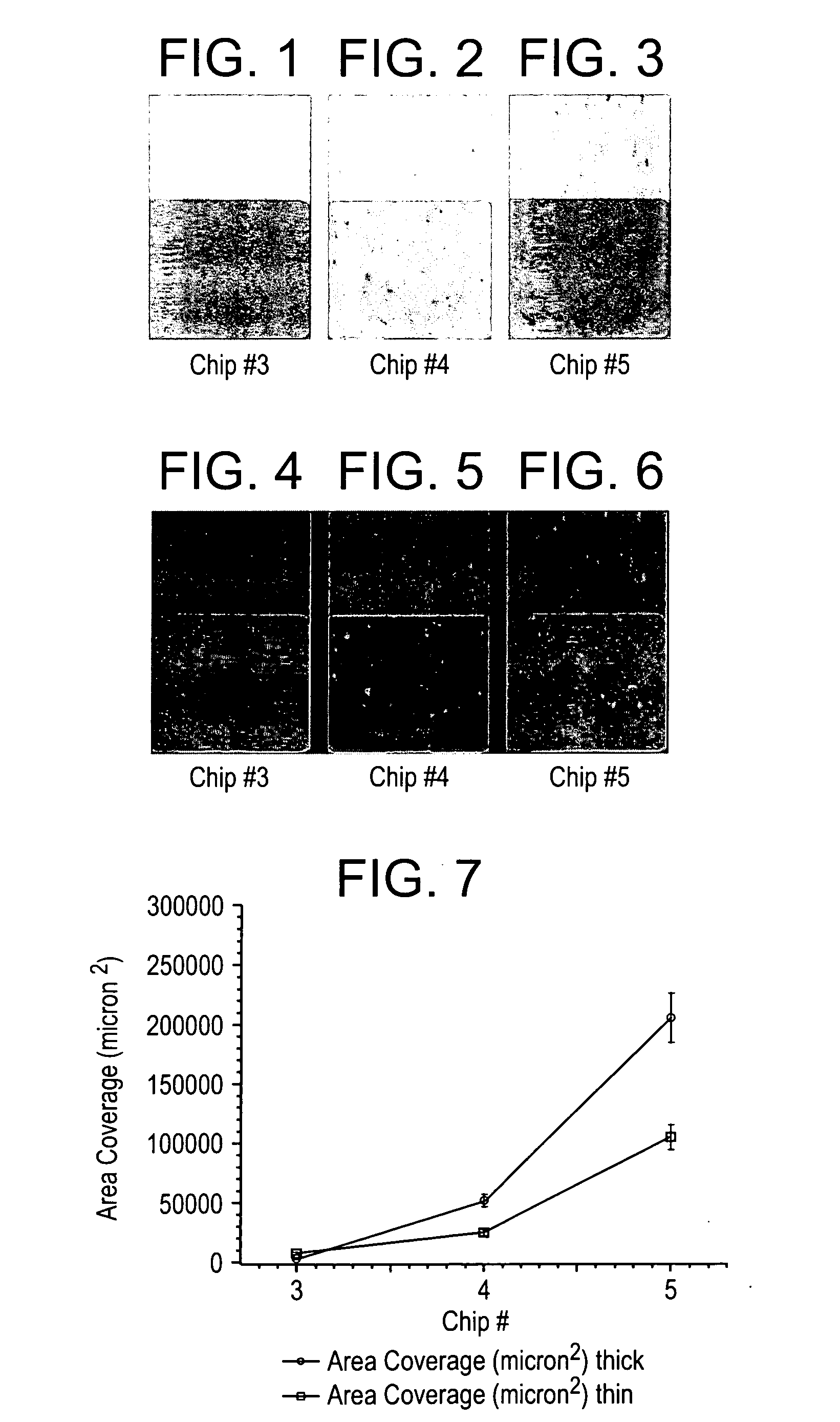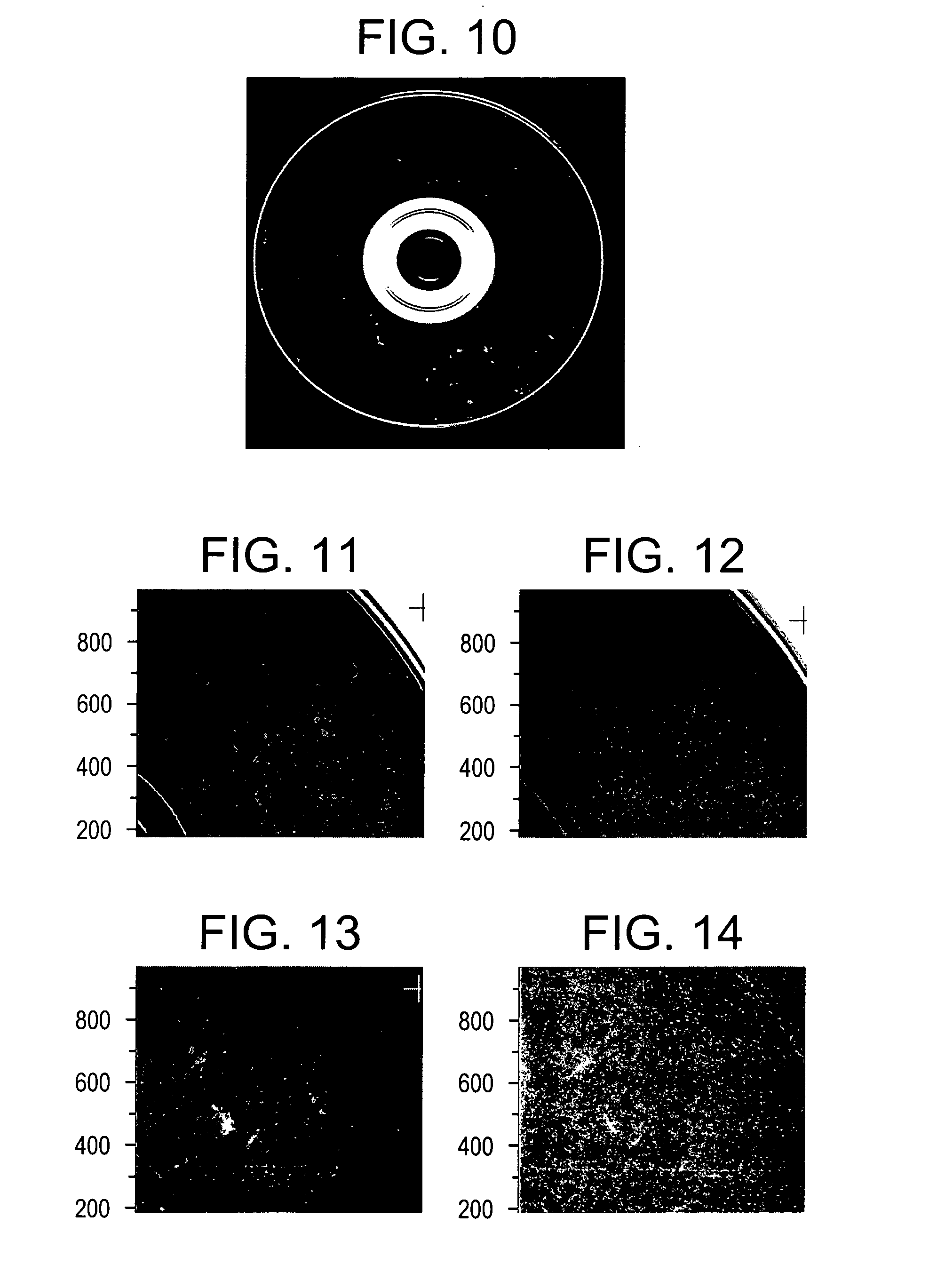Authenticatable plastic material, articles, and methods for their fabrication
a technology of authenticatable plastics and plastic materials, applied in the field of authenticatable plastic materials, articles, and methods for their fabrication, can solve the problems of high undesirable non-uniform distribution of dyes and incorrect signals,
- Summary
- Abstract
- Description
- Claims
- Application Information
AI Technical Summary
Problems solved by technology
Method used
Image
Examples
example 1
Molded Polycarbonate Articles with Different Predetermined Levels of Marking
[0059] Master batches were prepared using about 0.25 wt % of a blue colorant (Solvent Blue 104) (based upon a total weight of the master batch) compounded into a polycarbonate matrix, namely Lexan® OQ 1030 (commercially available from General Electric Plastics, Pittsfield, Mass.). The master batch also contained a phosphite stabilizer and a mold release additive. Resins with different properties, such as Tg, Mw, melt flow rate, were used to form the master batches as shown in Table 1. All of the resins in Table 1 are polycarbonate, merely different grades.
TABLE 1CapillaryDescription ofmeltmaster batchMwTgηo1MFRviscosityChippolycarbonate(amu)(° C.)(poise)(300° C.)(Pa-s)1Lexan ® OQ217,80014469065 84310302Lexan ®—145—251473HF1110R3Lexan ® 104R32,7001488,400772234Lexan ® 13037,00015013,2003.587245Lexan ® 4701—180——7375
1ηo = zero shear rate melt viscosity as measured by parallel plate rheometry at 300° C.
2OQ ...
example 2
Molded Polycarbonate Optical Disks with Random “Marble”
[0063] Random markings were further produced in molded optical disks. DVDs were molded with markings depicted in FIG. 9. The markings in molded optical disks are further visualized by inverting the colors as shown in FIG. 10.
[0064] Optical features of the markings were further evaluated using reflected light and fluorescence imaging of molded articles. For reflected light imaging at a given wavelength, the article was illuminated with a white light source. Reflected light from the article was captured with a cooled charge coupled device (CCD) camera through an appropriate bandpass optical filter. Several optical filters were installed in a filter holder for automatic filter change during experiments. For fluorescence imaging, a 633 nm light source (He—Ne laser) was used in conjunction with bandpass filters.
[0065] A reflected light image through a 645 nm to 655 m bandpass filter is depicted in FIG. 11 which clearly illustrates ...
example 3
CD-R Discs with Color Spots
[0067] A series of colored CD-R discs were spotted with dye coatings comprising 10 wt % methylene blue in a poly(hydroxyethyl methacrylate) (pHEMA) matrix, based upon the total weight of the methylene blue and matrix. The matrix comprised a pHEMA / Dowanol PM solution comprising 10 wt % pHEMA, 1 wt % methylene blue, and 89 wt % Dowanol® PM (1-methoxy-2-propanol, commercially available from Sigma-Aldrich, St. Louis, Mo.), based upon the total volume of the solution.
[0068] A Plextor Premium CD-RW optical drive modified with an internal red, green, blue (RGB) color sensor with a white light source (light emitting diode (LED)) was used to measure the apparent average color of the disk at a radius of about 28 millimeters (mm) to 34 mm as it was spun at 2,000 revolutions per minute (rpm) in the drive. An uncoated disk (FIG. 15) was found to have the following RGB values: R=258, B=104, G=213, with an overall reflectivity (using an unfiltered photodiode) of C=662....
PUM
| Property | Measurement | Unit |
|---|---|---|
| melt flow rate | aaaaa | aaaaa |
| glass transition temperature | aaaaa | aaaaa |
| optical density | aaaaa | aaaaa |
Abstract
Description
Claims
Application Information
 Login to View More
Login to View More - R&D
- Intellectual Property
- Life Sciences
- Materials
- Tech Scout
- Unparalleled Data Quality
- Higher Quality Content
- 60% Fewer Hallucinations
Browse by: Latest US Patents, China's latest patents, Technical Efficacy Thesaurus, Application Domain, Technology Topic, Popular Technical Reports.
© 2025 PatSnap. All rights reserved.Legal|Privacy policy|Modern Slavery Act Transparency Statement|Sitemap|About US| Contact US: help@patsnap.com



